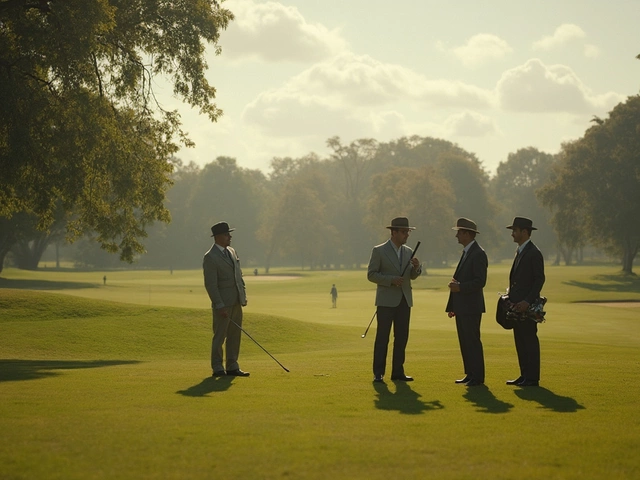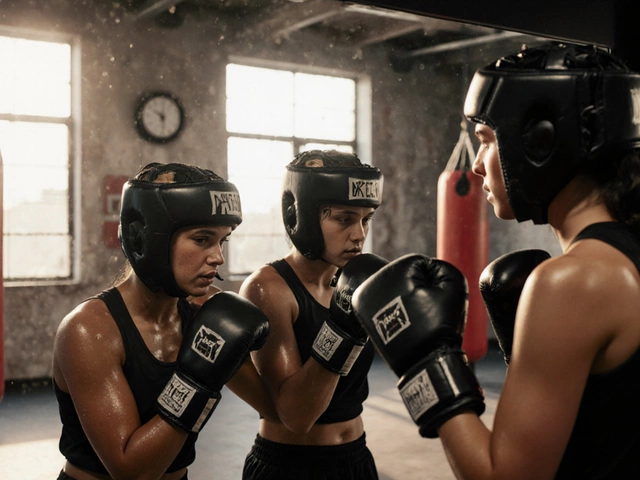Historic Longest Boxing Match: The Epic 110-Round Battle
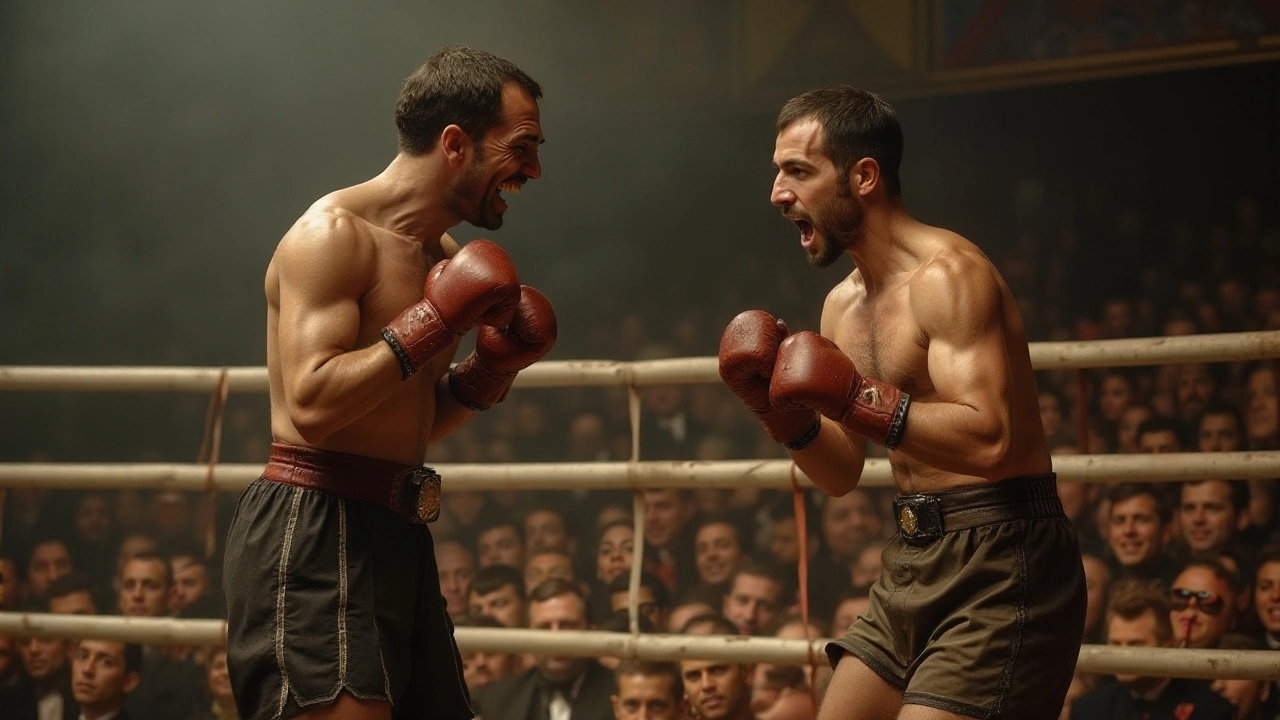
Imagine stepping into a boxing ring. The crowd roaring, the bell's clang, and the adrenaline surging through your veins. Now imagine fighting not just for a few rounds but for an unfathomable 110 rounds. Impossible in today's world of regulated sports, yet this was the reality for two fighters in the late 19th century.
This clash stands out as a marathon of resilience and unyielding willpower, a testament to the human spirit. While modern audiences witness championship bouts that usually conclude within 12 rounds, this historic encounter took boxing into the realm of the extraordinary.
Back then, fighters were prepared for grueling tests, facing conditions that appear harsh through our contemporary lens. But out of this hardship came a legend, and with it, stories of unrivaled endurance and determination.
- The Historic Match Overview
- Dramatic Events and Challenges
- The Fighters' Endurance
- Legacy and Impact on Boxing Rules
The Historic Match Overview
In the world of boxing, few events have etched themselves into the annals of history as dramatically as the longest boxing match ever recorded. This legendary bout took place on April 6, 1893, in New Orleans, a city known for its vibrant culture and fervent sports scene. There, in the heart of the Crescent City, two determined fighters, Andy Bowen and Jack Burke, faced off in a grueling battle that lasted an unprecedented 110 rounds. With each fighter showcasing remarkable endurance, this match defied the limits of human stamina, curiosity quickly transformed into awe as the hours ticked by.
The match began as any other, with the boxers exchanging measured blows, testing each other's skill and strategy. However, as the rounds piled on, it became evident that these two were not just fighting each other; they were wrestling with the very manifestation of fatigue. As the clock ticked towards daylight, spectators, journalists, and officials alike found themselves on a rollercoaster of emotions, witnessing a spectacle of both human glory and agony. The fight was not only a bout between two men but also a cultural artifact reflecting the era's rugged sportsmanship. Under the rules of the day, there were no time limits on rounds, allowing for such a marathon match to unfold.
This fight was a test not only of the fighters' physical endurance but also of their mental fortitude. Amidst the storm of punches, both men sustained injuries that would have derailed any modern match, yet they persisted. As the bell signaled the beginning of each new round, the fighters continued through sheer determination. The match finally ended after more than 7 hours, not by a victory blow but rather by a stoppage due to sheer exhaustion on both sides. This historic encounter, despite its lack of a clear winner, became a defining moment in boxing history and profoundly influenced the structuring of modern matches.
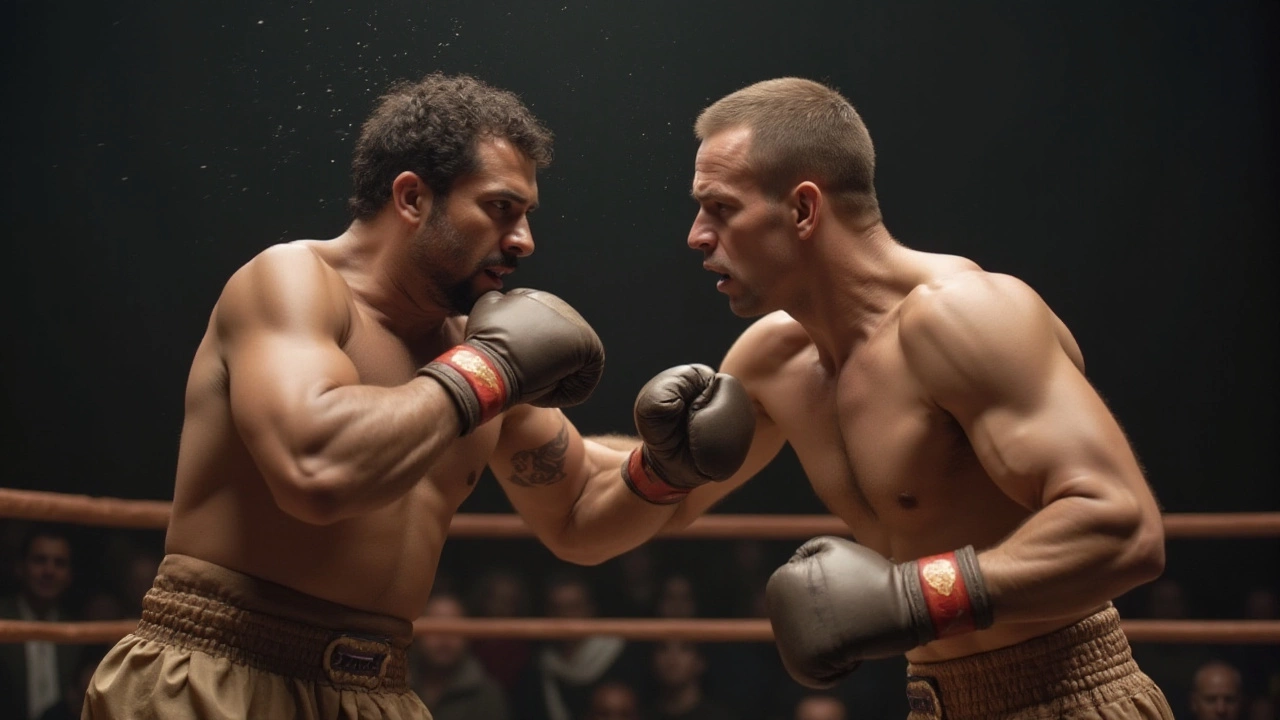
Dramatic Events and Challenges
In the fascinating realm of boxing, the longest match ever recorded wasn't just about the fight itself but about the drama that unfolded round after round. Taking place on April 6, 1893, in New Orleans, this bout between Andy Bowen and Jack Burke turned into a spectacle of endurance that the sport had never seen. As the fight commenced, neither boxer was prepared to yield, each being propelled by sheer determination and the roaring encouragement of the onlookers. Throughout the long, grueling hours, spectators were treated to a mesmerizing display of resilience. Yet, for the fighters, it was an ordeal that tested their limits, physically and psychologically.
A significant challenge during the fight was the immense physical toll it took on both men. With 110 rounds, the bout lasted over seven hours, a length utterly unthinkable today. It's said that during this mammoth event, the fighters spent most of the time barely able to swing, some rounds passing with minimal offense. Conditions back then were grueling. The ring's bare canvas and the rudimentary boxing gloves offered little comfort. Water breaks were scarce, and the men were left to deal with their increasingly incapacitated bodies. They pushed forward, driven possibly by the lack of financial success in anything less than a victory.
The relentless demands of this historic clash were compounded by a lack of formal rules compared to modern boxing. Back then, there weren't strict guidelines to safeguard the health and safety of the fighters. As the fight extended into previously uncharted territory, the audience, undoubtedly unfazed by typical evening schedules, continued their support amidst growing concerns for the health of the athletes. Audible gasps rung around with each exchanged blow as word spread of the unique and extraordinary sporting spectacle in progress. A fan in the audience reportedly said, "I've never seen two men determined to fight to the finish like this."
Beyond the physical, the psychological strain was equally telling. Imagine facing an opponent for not just 12 rounds, but nearly tenfold. The resilience and grit required to remain mentally focused round after round is the stuff of legends. It was not just a physical battle, but a mental contest. Every slow, deliberate step, every swing of the arm that felt as heavy as a lead weight, was contested by the brain’s hollow cries to stop. These episodes marked clear evidence of the psychological duel that existed parallel to the physical one. Historic boxing had never quite witnessed anything like it. The toughness exhibited cemented both fighters as mythical figures within the sport’s annals.
Neither Bowen nor Burke emerged as a winning hero. The fight was declared "no contest" when they could no longer lift their gloves in exhaustion post the 110th round. Subsequently, neither competitor left the ring victorious, but both were congratulated for their unparalleled resilience. Such was the nature of this herculean encounter, that in modern boxing, fights are now subject to stricter regulations ensuring the health and safety of fighters. Lessons etched from this historic bout paved the way for these necessary changes. It is a moment in sports history that shines brightly, casting a lasting legacy over boxing's evolution. These challenges and dramatic events are what make this fight legendary, securing its place in the countless tales of epic boxing fights.
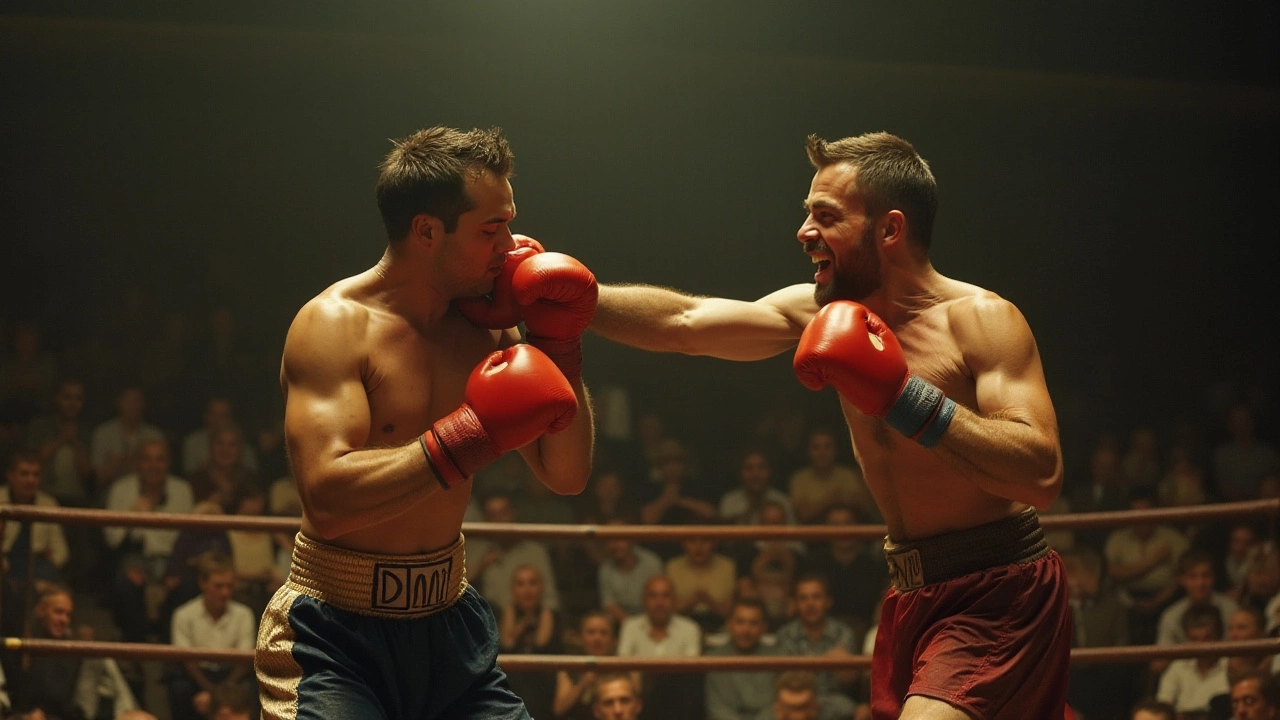
The Fighters' Endurance
The bravery and resilience displayed by the boxers involved in the historic 110-round marathon is nothing short of awe-inspiring. In today's boxing world where matches are carefully regulated, it's hard to fathom the physical and mental toll of such an extended bout. This match wasn't just a test of skill but of human endurance, as the fighters battled not only their opponents but also their own limits, round after grueling round.
These athletes trained under vastly different conditions compared to modern fighters, relying more on natural fortitude and sheer tenacity. Historical accounts tell us that dehydration, exhaustion, and painful injuries would have been par for the course, yet they persevered, driven by a mix of pride, ambition, and the roar of the expectant audience. The longer the match dragged on, the more it became a mental game as much as a physical one, each fighter struggling to maintain focus and hope amid the agony.
Their bodies must have screamed for rest, every round a mountain to climb, yet somehow they found the strength to keep moving forward. It's intriguing to consider whether today's finely-tuned athletes, equipped with advanced training and nutrition, could withstand such a lengthy ordeal. The longest boxing match truly exemplified the extraordinary physical capabilities and resilience of human beings in the face of daunting challenges. Neither opponents nor clock seemed to matter; it was the heartbeat of the sport itself that kept them standing.
Understanding historical context sheds further light on this monumental bout. This era of boxing allowed for no air conditioning, no cushioned protection, just raw courage and determination in its purest form. Historically, fights continued until a decisive victory was achieved, unlike today's time-limited bouts. This meant pushing through levels of weariness and pain that must have felt insurmountable at times. In recounting this match, it's not just the number of rounds that impresses but the sheer grit required to endure such relentless adversity.
The legendary boxing trainer Cus D'Amato once said, "The hero and the coward both feel the same thing, but the hero uses his fear, projects it onto his opponent, while the coward runs. It's the same fear, but it's what you do with it that matters." Such a quote echoes through the halls of boxing history, embodying the essence of what those determined fighters must have felt in that ring.
Today's boxers, though not required to endure rounds numbering in the hundreds, still honor this legacy of resilience. The stories of stamina and courage from those eras continue to inspire, holding lessons in fortitude and perseverance against the odds. Therein lies the heart of what it means to truly love the sport: stepping into the ring, facing your fears, and whether for 12 rounds or 110, giving everything until the very last bell rings.
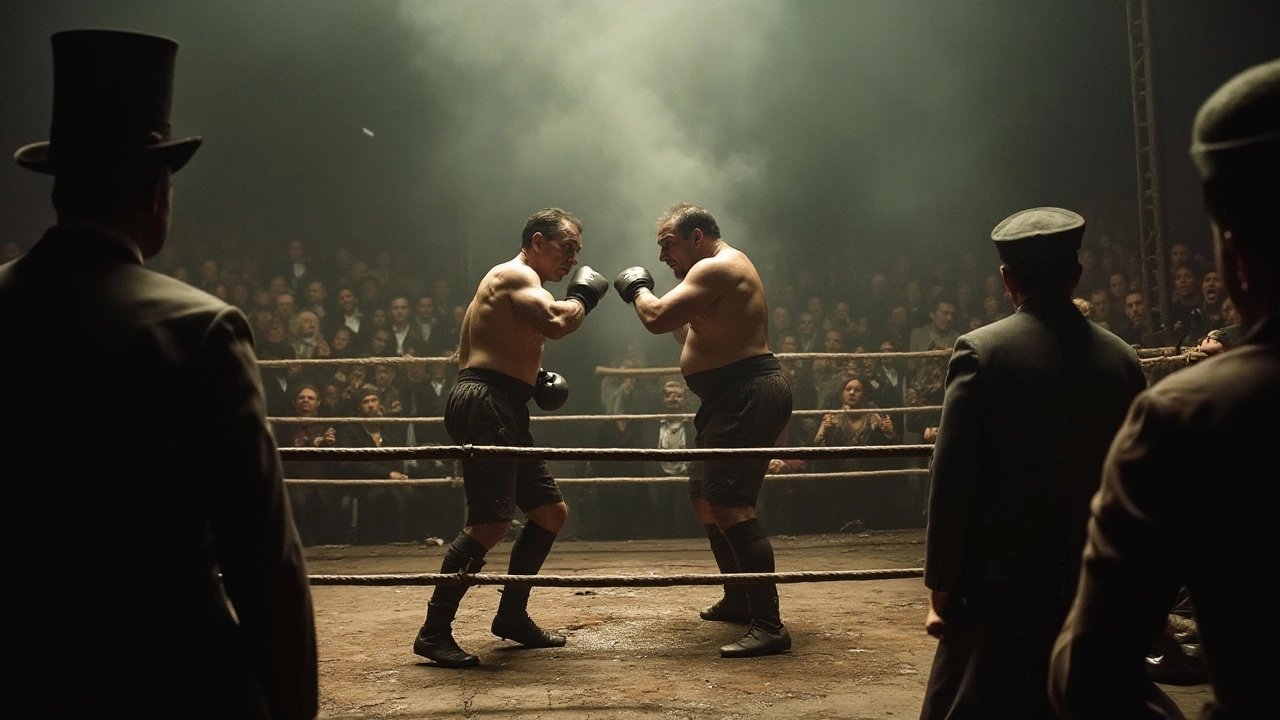
Legacy and Impact on Boxing Rules
The legendary 110-round bout of the late 1800s left a profound mark on the sport of boxing, compelling the sport's governing bodies to rethink and reframe the rules to better suit the evolving standards of safety and competition. Before the introduction of regulated round limits, boxing matches stretched as long as the competitors could physically endure, leading to bouts that tested human endurance to the absolute limit. This particular contest became the catalyst for significant shifts in how boxing was perceived and practiced.
In the aftermath of the match, the conversation surrounding boxing regulations grew louder, raising questions about the sustainability and safety of such prolonged encounters. It eventually became a pivotal moment in boxing history, influencing the implementation of structured time limits that now govern the sport. This change prioritized fighter safety and prompted organizers to consider the physical toll of marathon bouts. The new regulations ushered in a more audience-friendly format, transforming bouts into a spectacle of both skill and strategy rather than sheer endurance.
The modern era of boxing embraces a maximum of 12 rounds, starkly contrasting with the exhausting battles of olden times. These reforms emerged from a deep recognition of the sport's nature and the need for improvements to prevent severe injuries and unwanted fatalities. The revision of rules included not just limits on the number of rounds but also mandatory gloves, weigh-ins, and standards to ensure fair judging. These elements form the bedrock of today's boxing matches.
Professional boxing's transition into a regulated sport can largely be credited to moments like the 110-round marathon. Historians of the sport often highlight this event as a turning point in the narrative of boxing. While undoubtedly taxing on its competitors, its significance can't be overstated. It vividly demonstrated the lengths of human perseverance and resilience in the epic boxing fight, instigating discussions that laid the groundwork for much-needed changes.
The legacy of these adaptations can be seen today in the measures put in place by organizations like the World Boxing Council (WBC) and the International Boxing Federation (IBF). Their unified efforts ensure that the historic boxing narratives don't just highlight the evolution of the sport but also reflect broader considerations of athlete welfare. As Thomas Hauser, a noted boxing historian, once said,
"Boxing is the ultimate test of a man's spirit, but it should never be at the cost of his life."His words resonate with the ethos of reform born out of mythic bouts like the 110-round spectacle.
